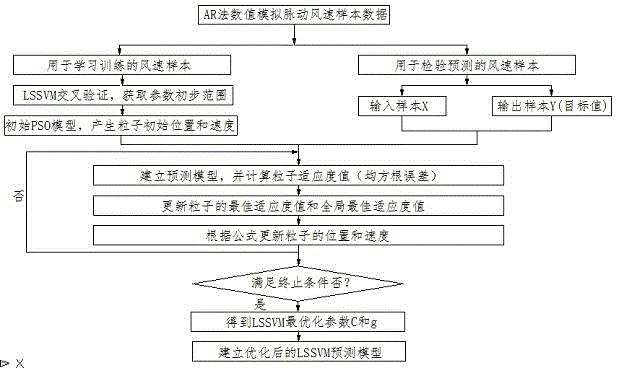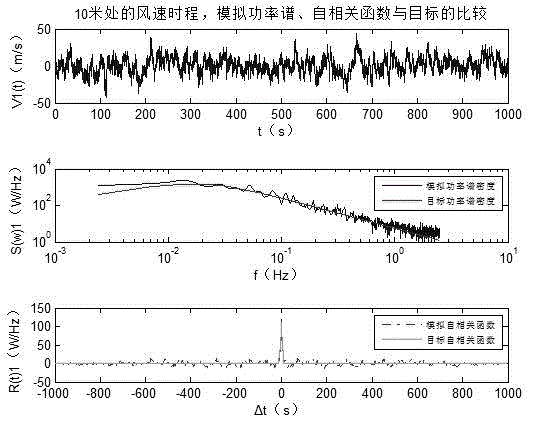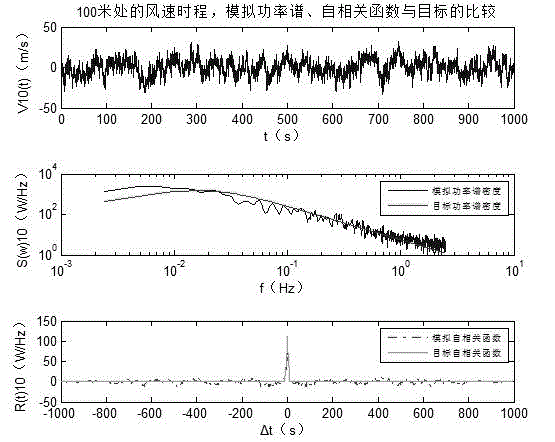Method for simulating fluctuating wind speeds on basis of data drive
A pulsating wind speed, data-driven technology, applied in the direction of electrical digital data processing, special data processing applications, biological neural network models, etc., can solve the problems of time-consuming, low simulation accuracy, etc.
- Summary
- Abstract
- Description
- Claims
- Application Information
AI Technical Summary
Problems solved by technology
Method used
Image
Examples
Embodiment 1
[0055] see figure 1 , the process steps of this data-driven fluctuating wind speed simulation method are as follows:
[0056] 1) Select a super high-rise building and determine the parameters required for numerical simulation of fluctuating wind speed: the simulated building height and the heights of the simulated wind speed points, the average wind speed at a height of 10 meters, surface roughness coefficient, ground roughness index, simulation correlation function;
[0057] 2) A set number of fluctuating wind speed time histories uniformly distributed along the height generated by the numerical simulation of the AR method are used as limited original fluctuating wind speed sample data; and the simulated values of the wind speed power spectral density, autocorrelation function and cross The coincidence degree of the target value is tested to verify the feasibility of simulating the wind speed time history of super high-rise buildings based on the AR model;
[0058] 3) The...
Embodiment 2
[0061] This embodiment is basically the same as Embodiment 1, and the special features are as follows:
[0062] The AR model is represented by the following formula:
[0063] v ( t ) = - Σ k = 1 p ψ k · v ( t - kΔt ) + N ( t ) - - - ( 1 )
[0064] In the formula: v(t) and v(t-kΔt) are the fluctuating wind speed time history vectors of M points in space at time t and t-kΔt respectively; p is the order of the AR model; Δt is the time step of the simulated wind speed long; k is the AR model autoregressive coefficient matrix, which is a...
Embodiment 3
[0067] Based on the PSO optimized LS-SVM data-driven fluctuating wind speed simulation method, the specific steps are as follows:
[0068] The first step is to select a super high-rise building with a height of 200 meters in a city center, and take points every 10 meters along the height direction as the simulated wind speed points. Other relevant parameters are shown in Table 1:
[0069] Table 1 Related simulation parameters
[0070]
[0071] Indicates the average wind speed at a height of 10m.
[0072]In the second step, a certain number of fluctuating wind speed time histories uniformly distributed along the height generated by numerical simulation of the AR method are used as limited original fluctuating wind speed sample data. The simulated power spectrum adopts Davenport spectrum, and only considers the spatial correlation in the height direction. The correlation function is: C x =C y =0,C z =10. The 4th-order autoregressive model order is taken, that is, p is...
PUM
 Login to View More
Login to View More Abstract
Description
Claims
Application Information
 Login to View More
Login to View More - R&D
- Intellectual Property
- Life Sciences
- Materials
- Tech Scout
- Unparalleled Data Quality
- Higher Quality Content
- 60% Fewer Hallucinations
Browse by: Latest US Patents, China's latest patents, Technical Efficacy Thesaurus, Application Domain, Technology Topic, Popular Technical Reports.
© 2025 PatSnap. All rights reserved.Legal|Privacy policy|Modern Slavery Act Transparency Statement|Sitemap|About US| Contact US: help@patsnap.com



